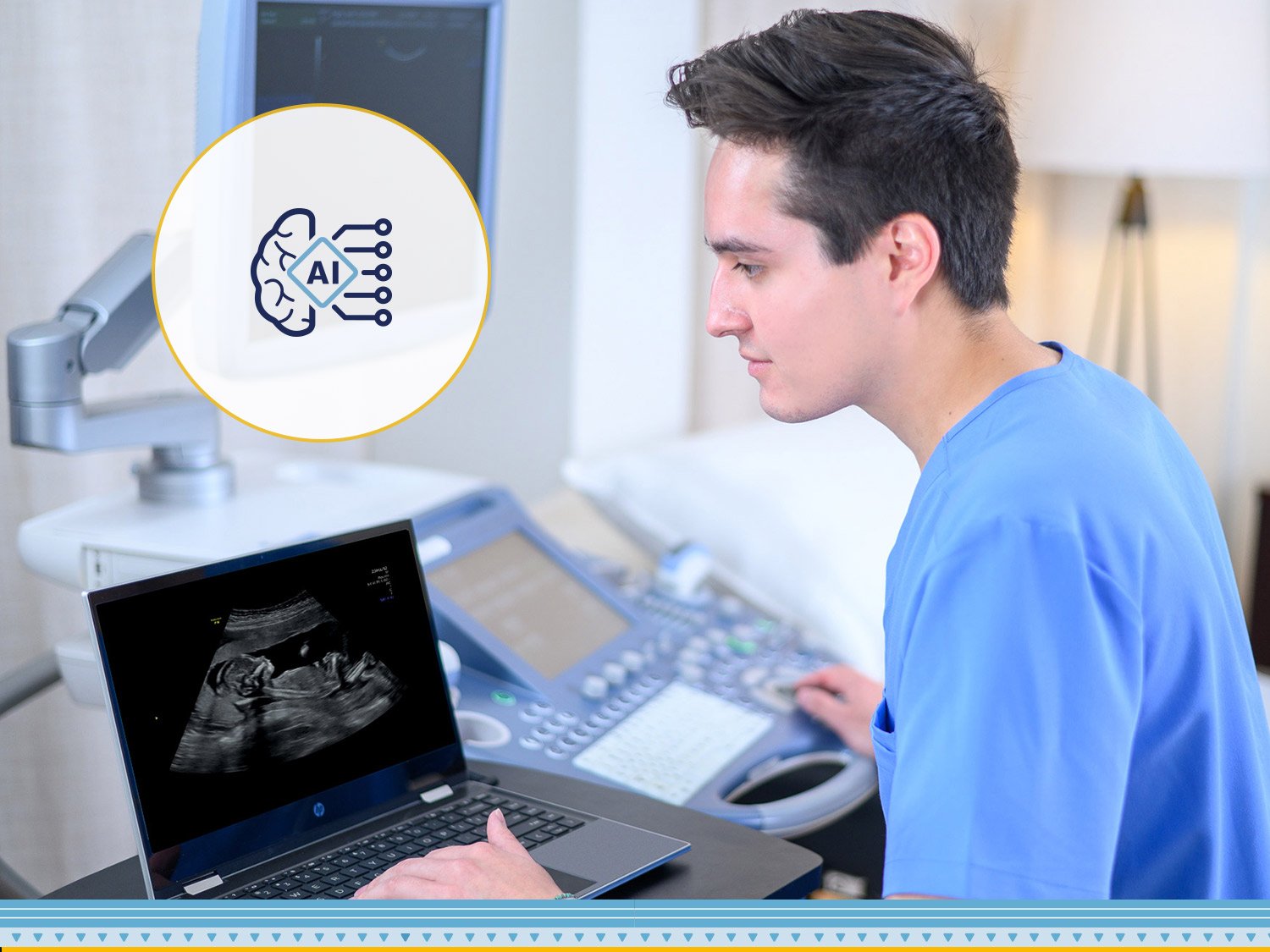You Still Need a Sonographer in the Age of AI
One look at industry headlines is all you need to realize artificial intelligence (AI) is improving at breakneck speed. And while we’re big proponents of tech-enabled solutions that increase access to ultrasound care, we’re also convinced that AI, in its current state, isn’t ready to go it alone just yet.
Even if you just invested in the fanciest, AI-enabled ultrasound technology on the market, here are some reasons you still need a sonographer to oversee it:
1. Accuracy Verification
AI, while powerful, is not infallible. We don’t mean to be dramatic, but an inaccurate diagnostic report can mean the difference between treatment and suffering—or life and death—and it’s our responsibility to provide the greatest accuracy to every patient. Today, the greatest chance for accuracy usually doesn’t reside with AI-only analysis.
For example…
Consider this study regarding AI and physician assessment of lung ultrasound to identify pulmonary edema. The physician was 96.7% sensitive and 79.1% specific compared to the AI software’s 95.6% sensitivity and 64.1% specificity. This demonstrates that AI was on par when it came to detecting pulmonary edema but returned significantly more false positives than the physician.
This demonstrates the need for a human counterpart to verify the accuracy of AI-generated findings. Diagnostic accuracy is crucial to achieving correct diagnosis, administering helpful treatment, and ultimately, achieving a healthful outcome.
2. Anomaly Detection
AI algorithms are trained to detect anomalies based on the data they have been trained on—data that can be low-quality and is often incomplete. Sonographers need to review AI's work to catch anomalies that don’t fit within the parameters set by the training data to ensure that rare or unusual cases are not overlooked.
For example…
In a recent study regarding AI in fetal ultrasound, the authors extolled AI’s ability to identify prenatal ultrasound views, assist in gestational age estimations, and measure biological parameters. These are helpful capabilities, but when it came time to discuss limitations, the authors admitted, “Most data sets lack pathological cases and only include healthy fetuses and pregnant women. The uneven training data sets result in poor algorithm training performance.”
Until datasets are both high-quality and complete, ultrasound images need to be reviewed by sonographers for pathology detection. AI will also have to lean on them for high-quality training images—and lots of them—to increase its ability to identify anomalies.
3. Complex Decision-Making
While AI has been proven to aid decision-making processes, it often suffers from the ‘black box problem’—the inability to show how it came to its conclusion. Because AI often can’t explain its outputs, an expert sonographer who can knowledgeably relay their findings is a highly valuable asset to any care team.
For example...
In their 2023 article, Responsible application of artificial intelligence in health care, Obasa and Palk conclude, “Black box systems raise numerous ethical concerns, including explicability [...] When there is a high risk of harm or negative outcomes associated with the decisions of such systems, we should be able to ascertain a full understanding of the decision-making process of the system. This implies that black box systems, for which such an explanation is not possible, should not be used with procedures that carry such high risk.”
As noted, explainability is paramount to making informed decisions. Understanding the how’s and why’s of a patient’s case, and being able to communicate them to the patient, is key. AI’s inability to answer these questions leads to a continued dependence on sonographers and providers to complete these tasks.
4. Ethical Responsibility
Ultimately, sonographers and other healthcare professionals bear an ethical (and sometimes legal) responsibility for patient care. But understanding AI’s level of responsibility in a care setting is an area of concern with more questions than answers. Since current laws regulating ethical and legal responsibility didn’t see AI coming, human oversight of AI is the best, and safest, course of action.
For example...
Adding AI into the care equation can make it difficult to attribute responsibility to just one party. This is known as diffusion of responsibility. This 2022 article identified three levels of responsibility diffusion that occur with the use of AI in a clinical context:
Causal: responsibility for harm sustained from misdiagnosis or misguided treatment
Moral: responsibility to prevent harm and promote welfare (think the Hippocratic oath)
Legal: responsibility to accept liability and to compensate for harm done
It’s currently difficult to prove AI should be held to any of these levels of responsibility. So, while it doesn’t solve all the problems of responsibility diffusion, reviewing AI's work is still an important step in providing ethical patient care.
Yes, and...
So far, our discussion highlights the importance of human oversight for AI in medical imaging. A real-life sonographer is still needed if we’re going to provide accurate, ethical, patient-centered care. But we want to say more on this issue: Yes, a sonographer is still needed… and one of the greatest tools you can provide them is AI.
For example...
A deep learning-based graph output helped sonographers improve fetal cardiac ultrasound screenings for more accurate detection of congenital heart disease.
Automated segmentation of images reduced keystrokes by 80% for fetal brain exams and reduced delineation of organs at risk to just 20 minutes (compared to 1-3 hours when completed manually).
AI automations in fetal ultrasound acquired and measured images, enabling sonographers to concentrate better on image interpretation.
Automated quality scores for fetal cardiac four-chamber views were a useful training tool to improve scanning and provide more consistent images.
Considering the limitations listed above, and the examples provided here, we don’t think the AI conversation pits sonographers against emerging technology. Rather, we think emerging technologies enhance and expand their already incredible skillset.
Have we convinced you? Do you agree that sonographers are still needed—and that AI is a helpful tool? Let us know in the comments.

